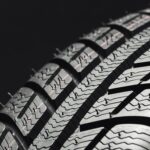What is Mineral Rubber (MRTM)?
Mineral Rubber (MRTM) is a highly processed high temperature hard asphalt that is ground to a granular consistency and has been used for over 50 years in the processing of rubber products. In addition, it is used as an additive for plastic resins, brake linings, paints, protective coatings, and varnishes.

MR is also a superior underground pipe insulation and corrosion protection system. It can be used as a substitute for naturally occurring Asphalt such as gilsonite, particularly in the Well Drilling Fluids and Foundry Industries.
Mineral Rubber finds wide usage in the rubber industry as an economical extender and plasticizer for natural rubber, reclaim and many types of synthetic rubbers. Its use can provide improved processing, better scorch resistance and faster extrusion rate.
Mineral Rubber is particularly useful in soft, extruded rubber compounds to firm up the stock as it issues from the extruder and thereby allow it to hold its shape without flattening or collapsing. This feature is advantageous in processing many rubber products, where the extruded stock must retain its dimensional shape prior to cure.

Unlike most other extender/plasticizers, MR can be used at relatively high loadings without significantly reducing hardness of the finished rubber product. Mineral Rubber reduces modulus and increases elongation, which contributes to stress relaxation, a condition helpful in attaining improved static ozone resistance. The foregoing features, ease of handling and characteristically good maintenance of vulcanizate stress-strain properties before and after accelerated heat aging make mineral rubber an attractive ingredient for enhancement of compound processability and realization of desired end-product qualities.
Incorporation into Rubber Compounds
The recommended mixing procedure with use of either an internal mixer or open mill is to add the mineral rubber early in the mixing cycle, either during breakdown of the rubber polymer or with the first increment of carbon black or mineral pigment. The mixing temperature should then be allowed to rise to 250°F (120°C) or above and should be held at this temperature for at least one minute in order to flux in the mineral rubber.
Polymer Compatibility
Mineral Rubber is highly compatible with natural rubber, reclaim and all types of butadiene-styrene polymers. Use of mineral rubber in neoprene and nitrile rubbers is limited because of resulting adverse effects on oil resistance of vulcanizates. Mineral rubber is generally are not used in EPDM or butyl rubber polymers because of compatibility limitations.
Applications
Mineral Rubber finds usage as extender plasticizers in a wide variety of compounds, including those for: truck mud-guard flaps, mats, stair treads, covering strips, zero-pressure tires, tire treads and frictioning, window channeling, molded mechanical goods, shoe soles, electrical wire jacketing and insulation, hose and uncured calendared compositions.

